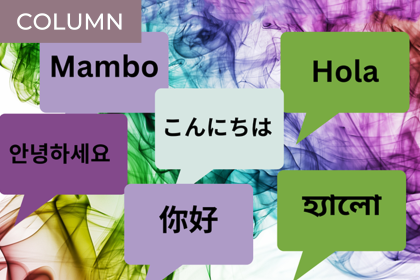As I’ve mentioned in previous articles, Japanese textbooks can be a valuable resource when you’re starting out with the language. However, it’s important to remember that most textbooks are designed for an academic setting. If you have recently moved to Japan and are just starting to pick up the language, you’ll need to approach Japanese in a more practical way.
During my first year in Japan, I didn’t spend enough time formulating a strategy for learning Japanese. For the most part, I simply learned vocabulary, kanji, and grammar in the order presented in my textbooks. This was adequate for survival Japanese (ordering food, asking for directions, shopping, etc.), but had I simply stopped to take stock and prioritize all of the words and kanji that frequently appeared in my daily life, I could have picked up the language faster. After reading this column, I hope that you can benefit from my mistakes and get a head start on Japanese fluency.
Setting Your Priority
Prioritizing daily-life vocabulary and kanji seems like an obvious approach to tackling Japanese. However, once you move to Japan, you’ll realize that the complicated characters found on everything from ATM menu screens to washing machine control surfaces can be overwhelming. One concession I have to make to the textbook-study argument is that there is a method to the madness of memorizing kanji characters. Most books and learning applications start with the simplest kanji and radicals—ones that serve as the foundation for more complicated characters to come.
If you’re still in this stage of learning, it’s easy to write off the more complicated daily-life kanji as out of your league. Despite that temptation, I suggest making flashcards and studying these characters, regardless of your Japanese level.
In the best-case scenario, you’ll increase your vocabulary faster. The human brain prioritizes memories that are rewarding. Repeatedly seeing the words that you are studying as you go through your day creates a sense of novelty and ensures that they stick in your memory. It’s much harder to memorize words and characters that only appear in your textbook.
In the worst-case scenario, by pre-studying words from your environment, your brain will be primed for them when they eventually do appear in your textbook or study application.
Getting Started
To get started, here are some practical sources for vocabulary and kanji that will show up in your daily life for as long as you live in Japan.
- Household appliances (television remotes and menus, air conditioner remotes, washing machine controls, etc.)
- Food and beverage packaging
- Touchscreens for commonly used kiosks (e.g., ATM and ticket machines)
- Letters and notices received in the mail (e.g., city hall notices, utility bills, etc.)
- Signs and advertisements along streets and on public transportation
If you need even more frequency-based study material, you can always dive into vocabulary lists such as this one. If you learn from my mistakes and consider the advice in this column, you’ll find yourself on the fast-track toward Japanese literacy.





